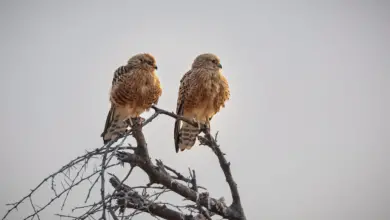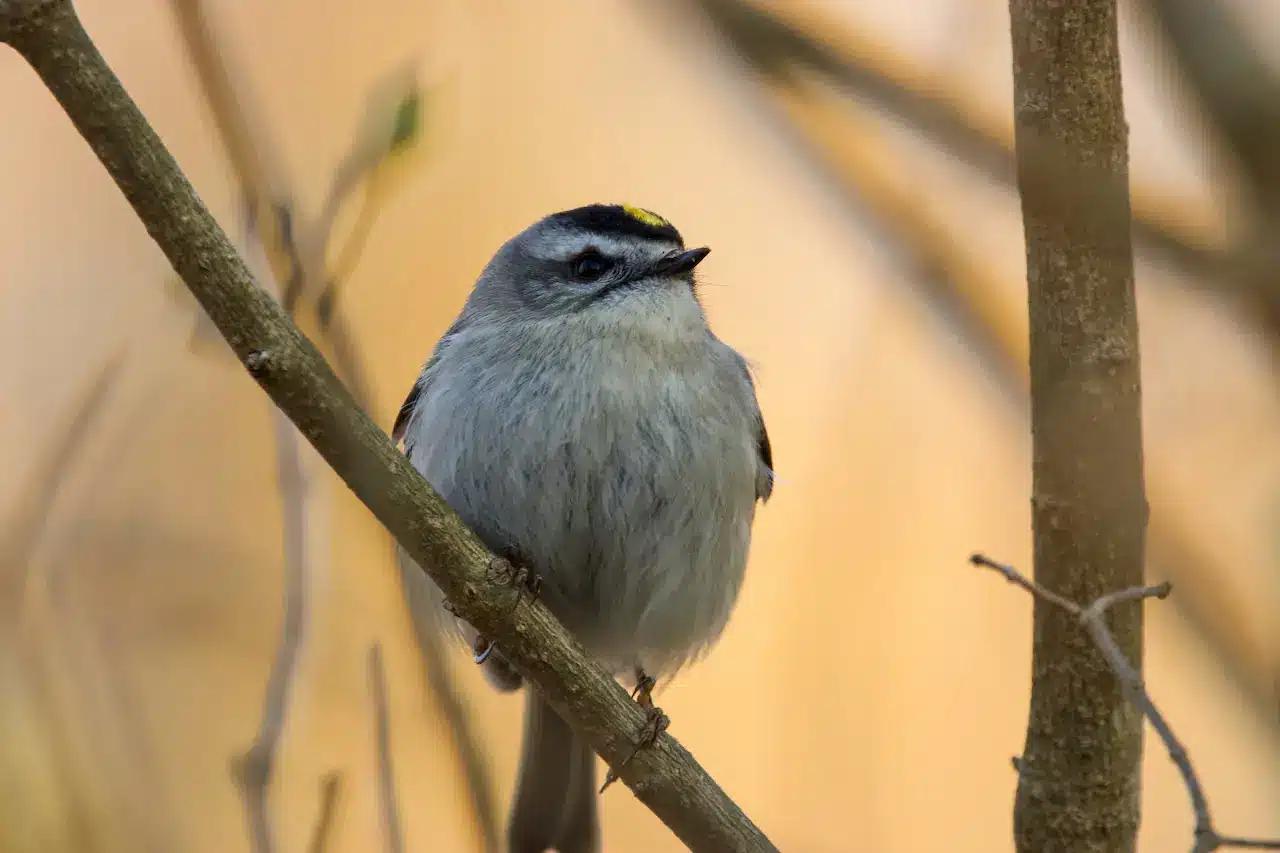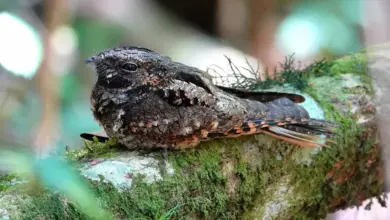White-cheeked Barbets aka Small Green Barbets
The White-cheeked Barbets Megalaima viridis, also known in India as the Small Green Barbet, is very similar to the Brown-headed Barbet (or Large Green Barbet), but this species is endemic to the forest areas of southern India and has distinctive supercilium and broader white stripe below the eye.
They also lack the orange eye ring of the Brown-headed Barbet.
The calls are very similar and the two species occur together in some of the drier forests to the east of the Western Ghats.
Like all other Asian barbets, they are mainly frugivorous although they may sometimes eat insects and they use their bills to excavate nest cavities in trees.
Distribution
The main range is along the Western Ghats south from the Surat Dangs and along the associated hills of southern India into parts of the southern Eastern Ghats mainly in the Shevaroy and Chitteri hills.
In some areas such as in the city of Bangalore, it has been suggested that this species may have displaced the Brown-headed Barbet which was once said to occur there.
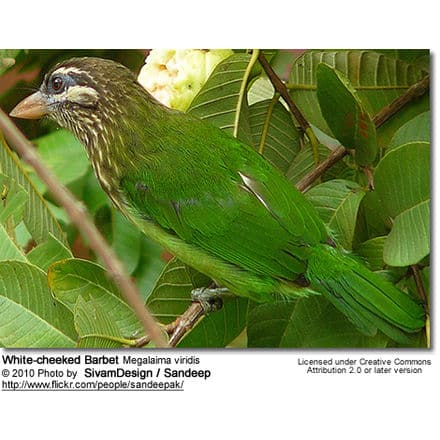
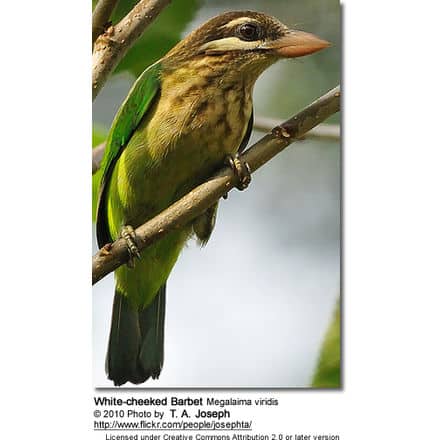
Description
Like many other barbets of Asia, these are green, sit still, and perch upright making them difficult to spot. During the breeding season which begins at the start of summer their calls become loud and constant, especially in the mornings.
The call, a monotonous Kot-roo … Kotroo… starting with an explosive trrr is not easily differentiated from that of the Brown-headed Barbet.
During hot afternoons, they may also utter a single note wut not unlike the call of Collared Scops Owl or Coppersmith Barbet. Other harsh calls are produced during aggressive encounters.
The head is brownish streaked with white, sometimes giving it a capped appearance. The bill is pale pinkish. The length is 165-185mm, the head of 51-53mm, and the tail of 60-67mm. Size varies from the larger northern birds to the southern ones.
Calls / Vocalization
During the breeding season, their calls are loud and unmistakable. The call, a monotonous ‘Kot-roo … Kotroo…’ is not easily differentiated from that of the Brown-headed Barbet. During hot afternoons, they also call with a single note ‘wut‘ not unlike the call of Collared Scops Owl.
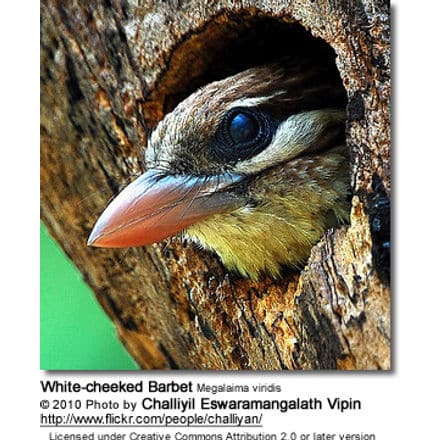

Diet / Feeding
These birds are mostly frugivorous but also feed on termites and other insects.
They feed on the fruits of various Ficus species including Ficus benjamina, Ficus mysorensis and other introduced fruit trees such as Muntingia calabura.
While foraging they are quite aggressive and will attempt to chase other barbets, Koels and other frugivores.
Behavior and ecology
These birds are primary cavity nesters, chiseling out the trunk or a vertical branch of tree with a round entry hole. They breed from December to July, sometimes raising two broods.
Favored nest trees in urban areas include Gulmohur Delonix regia and African Tulip Spathodea campanulata. These nest holes may also be used as roosts. They may reuse the same nest tree each year but often excavate a new entrance hole.
These barbets play an important role in forests as seed dispersal agents. They also visit the flowers of Bombax for nectar and may be involved in pollination.
These barbets are arboreal and will rarely visit the ground. They obtain most of the water they need from their fruit diet. When water is available in a tree hole, they will sometimes drink and bathe.
Their fruit eating makes them a minor nuisance in fruit orchards although they are noted as having a beneficial effect in coffee plantations.
A species of tick in the genus Haemaphysalis is known to be specific in its parasitic association with this species and some species of Leucocytozoon are known to be blood parasites.
Some species of Haemaphysalis are known to carry the virus responsible for the Kyasanur forest disease. Shikras have been recorded preying on adults.
Salim Ali noted that some birds may call in the night during the breeding season, but this has been questioned by other observers such as K K Neelakantan who note that these birds appear to be strictly diurnal.
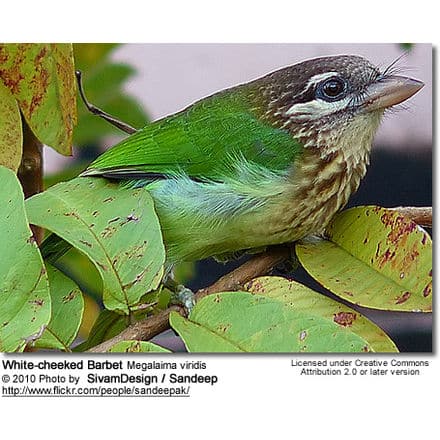
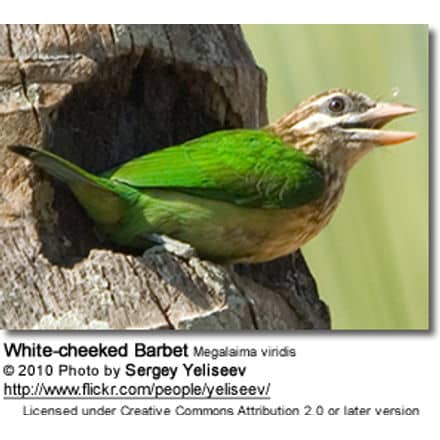
Courtship and Breeding
In southern India (Periyar Tiger Reserve) these barbets begin breeding in December and continue to nest until May. This species is believed to form a pair bond that lasts for longer than a single breeding season.
Calling is intense during the courtship period. Courtship feeding of the female by the male is usual prior to copulation. Calling intensity drops after the hatching of the eggs.
The nest hole is usually made in dead branches. These barbets are aggressive towards smaller hole-nesters such as the Malabar Barbet, sometimes destroying their nests by pecking at the entrance.
Both sexes excavate the nest and it can take about 20 days to complete the nest. Eggs are laid about 3–5 days after nest excavation. About 3 eggs are laid. The incubation period is 14 to 15 days.
During the day both sexes incubate but at night only the female sits on the eggs. The pair will defend their nests from palm squirrels which sometimes prey on the eggs.
Chicks are fed an insect-rich diet. The young leave the nest after 36 to 38 days
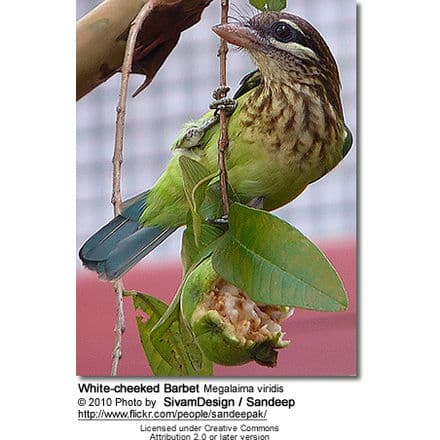
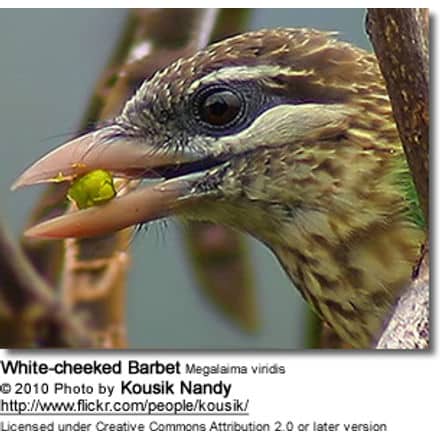
Asian Barbet Information … Asian Barbet Species … Asian Barbet Photo Gallery

